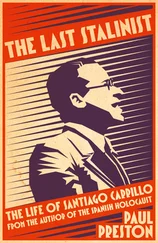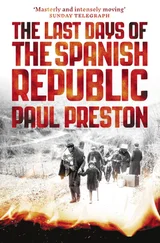But then he heard the thunderous clash of other soldiers coming to attention.
He glanced at the CCTV screens: the medics stood outside, oblivious. But in the lobby, two lines of soldiers stood with weapons shouldered while the blast doors opened. He rushed to the loopholes, placed at shoulder height, and struggled to see past the line of men. The soldiers saluted as one. Someone was greeted by a general, someone shook a hand — but he could not see who.
The door to the corridor opened. “Mr. Vangona? You okay in there?” asked one of the medics. Kwame pivoted and brought his weapon up to point at the man. He reached for the trigger — but his old injury left his hand scrabbling along the side of the weapon.
He looked back through the loopholes, and then the CCTV: the lobby was empty.
He lowered the weapon. “I am well,” he said, though there was clearly sweat on his face. The medic glanced down at the rifle. Kwame smiled thinly and pulled the trigger with his good hand: the weapon did not fire, nor could it ever fire. “Please do not interrupt.” He placed it back in the rack, and went out past the medics.
The corridor ran both ways around the exterior of the bunker, looping round until it met itself at the far end — or it was meant to. Halfway along, Kwame found a “NO ENTRY” sign on the ground, blocking the way as though someone was working on the corridor beyond. He stepped past it, put out a hand and found an invisible barrier: the apparent continuation of the corridor was an illusion. This was where they’d run out of space to simulate the bunker.
Sounds reached him. Not the medics this time, who waited just beyond the corridor’s curve. Instead, they came from the door set in the inner wall: the entrance to the innermost chambers. He walked up to the door, and pressed his ear against the hardened metal: it sounded like voices, footsteps, keyboards, computers. He closed his eyes.
The medics crept round the curve and watched him standing there, listening. He came back to himself, and swiped the keycard he had taken from the front desk. The door beeped, locks tumbled aside, and the interior opened up to him.
The sounds remained distant, just out of reach: things heard from another room, and never the sound from the room he was in. Inside the rough circle of the outer corridor, the bunker was laid out in something more like a grid, with a central cross of two corridors that met in the middle. The walls were artificial here: rough concrete and whitewashed breezeblock. Pipes and ducts lined the ceiling, routing streams of cables around the bunker. Light was provided by more fluorescent strips, tinging everything with their unhealthy green.
He pushed open the first door: an office. Desks, bulky CRT monitors, papers piled up. A map of the bunker on the wall showing the various security zones. A main screen that showed the National Security Status: NSS zero , indicating open war. He closed the door, and could hear voices from within again: mostly female, but indistinct.
He walked on. The nearside of the bunker was largely given over to living spaces. The main galley; the mess; the laundry; the recycling station. And the bunks. He pushed open the door and looked inside. Pipes ran across the ceiling. If you slept on the top bunk, you had to be careful not to bump your head when getting down.
A woman dangled from the pipes by a noose. One of the secretaries. He rushed forward to lift her, shouting for help to pull her down, but only drew the attention of the medics — who saw him trying to lift nothing in the middle of the room. He realised what was happening after they’d stared helplessly for a few moments, then pushed past them and went to the toilets.
There was another suicide in one of the stalls. A general, shoulderboards glinting in the dim light. He’d sharpened a medal and used it to slash his wrists, then slumped against the side of the stall, still staring.
Kwame fled from the toilets. The medics stepped back to let him go as he went down into the ops centre, sliding his card to gain admission and shutting the door behind him.
Twenty people looked up as he entered. They’d long since abandoned the discipline of fresh clothes and shaving. He noticed the smell: stale sweat and rotten chewed khat on everyone’s breath.
“Is there something we can do for you?” asked a colonel.
“I — the general — in the toilets —”
The colonel sighed, and pushed an intercom. “Medics to the gentlemen’s lavatory.”
“Sir?” asked a radio operator. “I’ve raised Matongu.”
The colonel forgot about Kwame, and went to the radio console. “Report! How many survivors!”
A crackle came back: “Twenty five… military… seventeen… civilian…”
“What is your dosage?” No answer. “Repeat: state your dosage!”
Words came out of the static: “Four grays… and rising. Three a week ago… the radiation is intensifying… no observed fallout but the dose is rising… do not have adequate protection above five grays… wish to request evacuation…”
The colonel looked over to a man in shadow at the end of the room. A man who wore the same suit as the one who had been saluted in the lobby. He gave no signal. The colonel put a hand on the mic to hide the noise of swallowing back his grief, then released it and spoke. “Matongu, your orders are to hold fast. I repeat, hold your position. Relief will come shortly.”
No reply came through the static. The colonel laid down the headset, straightened his uniform and marched to the man in shadow.
“Sir. I wish to report that the surviving population of the sovereign republic of Mutapa consists of forty-two individuals.”
The man in shadow put his head in his hands.
Kwame backed out of the room — out into the light of the corridor, wheezing and gasping for breath. The medics stepped forward but Kwame waved them away. He found his breath again, and stumbled into a staircase going down, leading to parts of the bunker used for maintenance, for generating power — and also for housing the hibernation chambers. The corridors below had not been whitewashed like the ones above. The concrete was raw and grey. But somehow he was more comfortable here. Somehow he knew this place better.
There , in that room, that was the generator: the nuclear pile, shielded from the rest of the bunker, radiation suits hanging on the wall. And here , this was the air filtration system, linked to the water tanks where more oxygen could be generated if needed. And this was the water recycling facility — pipes running to and from every sink, washbasin, toilet and tap in the bunker.
And there were the hibernation chambers. Sixty of them, in a hall off to the side of the main bunker, big enough to need structural pillars, all added after the original construction, when the technology had been gifted to Mutapa from the Chifunyikans. Each chamber was a sarcophagus lying on a low pedestal containing the support equipment.
Kwame crouched to inspect a unit, and pulled open a panel to reveal pipes and tubes and wiring; everything needed to keep the body fed and watered and oxygenated for years. It was beautifully designed, he noted. None of the poor soldering and jury-rigged parts you would find in the Mutapan versions, which were used in the shallow complex far above this one.
He turned away from the panel, and rested his back against the pedestal, sliding down until he was sitting.
He closed his eyes until he heard footsteps.
A man in shadow walked in, rested against the opposite pedestal and sat, just like Kwame.
They looked at each other across the gap.
“Hello, Mr. President,” said Kwame.
I was called to Hub Metro when they detected signs that Katie was improving. A medical team was working on her in a clean room in the hospital, and I had to put on a gown, cap and mask before they would let me in.
Читать дальше












